What “flora and fauna” lives off of the coast of Long Island
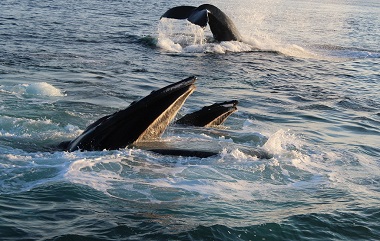
Humpback whales feeding cooperatively.
Photo by: Nicole Starkweather
Many patrons each year ask us: what kind of marine life lives in the Ocean in front of us? What’s in the water? Is this a king crab? Is it a dolphin or a shark? … All are great questions and here is a little snippet into our surroundings…
From harbor seals on eastern Long Island to humpback whales feeding just off New York City, marine mammals can be found in New York year-round. All marine mammals in the United States are protected under the Marine Mammal Protection Act (MMPA), and the majority of the large whale species found in New York are listed under the Endangered Species Act. There are two recognized groups of marine mammals that inhabit our waters: cetaceans and pinnipeds. (1)
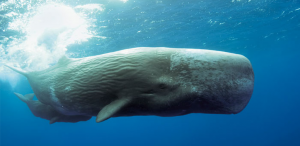
Sperm whale, Physeter macrocephalus Sperm whales are most commonly seen in New York during the spring and early summer. They’ve been sighted within the channel between Block Island Sound and Block Canyon, where a sea floor depression exists, and in other deep continental shelf waters.

Humpback Whale, Megaptera novaeangliae Humpback whales are notorious for their full body breaches and unique feeding behaviors, making them a spectacular sight on any whale watching trip. In New York, they’re often observed in shallower waters, such as Long Island Sound, Block Island Sound, Gardiners Bay, Fire Island and New York Harbor

Although dolphins are widespread, most species prefer the warmer waters of the tropic zones, but some, like the right whale dolphin, prefer colder climates. Dolphins feed largely on fish and squid.
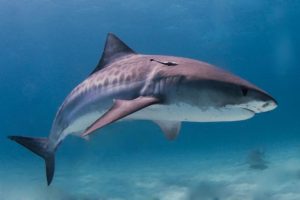
There are more than 350 different kinds of sharks, such as the great white and whale sharks. Fossils show that sharks have been around for 420 million years, since the early Silurian. The great white shark is one of the biggest sharks. They can detect blood from miles away: as little as one part per million of blood in sea water may be enough. More on sharks click here
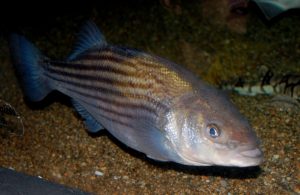
Striped Bass – Morone saxatilis—Stripers are important sport and commercial fish. Their speed, power and large size make them a favorite of anglers.
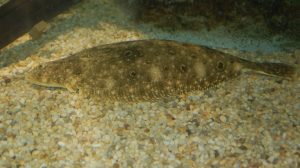
Summer Flounder or Fluke Paralichthys dentatus—A flatfish, summer flounder have both eyes on one side of their heads, are colored only on the eyed side, and swim on their sides.
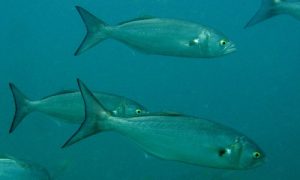
Bluefish Pomatomus saltatrix—Adult bluefish have a stout body and large mouth that is fully armed with sharp triangular teeth. Aggressive predators, they some- times continue to capture prey long after their hunger is satisfied.
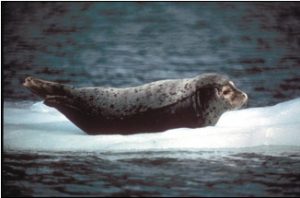
Harbor seal Phoca vitulina (Photo: US Fish and
Wildlife Service)
The American lobster, Homarus americanus, is a species of lobster found on the Atlantic coast of North America, chiefly from Labrador to New Jersey. It is also known as Atlantic lobster, Canadian lobster, true lobster, northern lobster, Canadian Reds, or Maine lobster.
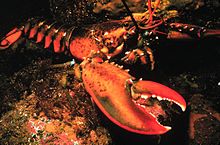
Atlantic rock crab or peekytoe crab) is a crab in the genus Cancer. It is found from Labrador to South Carolina at depths up to 2,600 ft (790 m), and reaches 133 mm (5.2 in) across the carapace. The rock crab has recently become a popular culinary item. The coining of the name “peekytoe crab,” referring to the fact that the legs are “picked” (a Maine colloquialism meaning “curved inward”). Until about 1997, they were considered a nuisance species by the lobster industry because they would eat the bait from lobster traps.
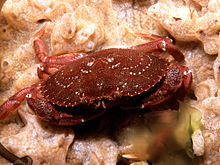
Most ghost crabs have pale-colored bodies that blend in well with the sand, though they are capable of gradually changing body coloration to match their environments and the time of day.
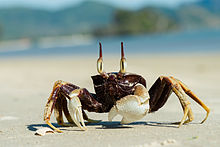
More than 330 species of birds have been recorded on Fire Island, more than 1/3 of all species found in North America.
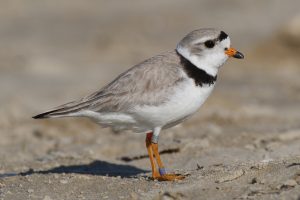
The piping plover is a small sand-colored, sparrow-sized shorebird that nests and feeds along coastal sand and gravel beaches in North America.
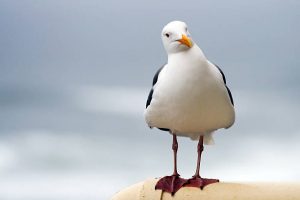
Gulls are seabirds of the family Laridae in the suborder Lari. They are most closely related to the terns and only distantly related to auks, skimmers, and more distantly to the waders.
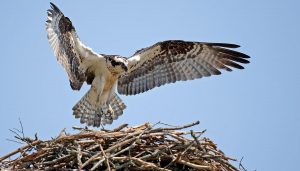
The osprey — also called sea hawk, river hawk, and fish hawk — is a diurnal, fish-eating bird of prey with a cosmopolitan range. It is a medium raptor, reaching more than 60 cm in length and 180 cm across the wings.
What to Do if You Encounter a Marine Mammal:
Two of the best known anthropogenic (human-caused) threats to large whale populations, seals and other marine animals include vessel collisions and entanglement in fishing gear. In order to help marine species, it is important to follow the correct protocol if you come across a marine animal in distress:
- Do not touch, harass or feed the animal.
If you see a stranded or entangled marine mammal, do not attempt to touch or disentangle the animal yourself. It is illegal to handle these animals without a permit, and can be very dangerous. It also causes stress and could potentially harm the animal significantly. - Observe from a distance
All marine mammals are protected under the Marine Mammal Protection Act, therefore, members of the public are instructed to remain at least 50 yards (150 feet) from a marine animal, both on land and at sea. It is okay to observe the animal at a safe distance, but if the animal notices you or changes its behavior, you’re too close. If you see a stranded or entangled marine mammal, please try to keep other people and their pets away from the animal. - Note animals physical characteristics and condition
In order to help the responders determine the species and what resources are potentially needed, be thorough with your description of the animal. Include details like the animal’s size, coloration and condition. Does it appear weak? Does is appear thin? Do you see any open wounds? If entangled, what kind of gear type is it? If possible, photograph or video the sighting from a safe distance. - Note whether or not the animal has any external identification tags or markings
It is possible that the marine mammal has an external tag, such as a satellite tag or flipper tag. Look carefully from a distance to see if there are any present. - Determine the exact location
In order for the response team to find the animal, it is critical to provide accurate directions. Try to be as specific as you can and, if you’re able, provide coordinates. If the animal is entangled at sea, be prepared to stand by until responders arrive, if possible. - Call the Riverhead Foundation Stranding Hotline, (631) 369-9829
If you see a stranded or entangled marine mammal in New York, immediately call the Riverhead Foundation’s Marine Mammal and Sea Turtle Hotline. If you leave a voice message, be sure to include very specific directions and information, as well as your name and phone number so the responders can call back if they have any questions.
http://www.dec.ny.gov/animals/108573.html
www.Wikipedia.com

Leave a Reply